
 There was a time when Chile wasn’t known for producing ultra-premium wines. Budget-friendly offerings were the calling card. While there are now copious examples of great high-end wines coming out of Chile, it was one wine that started the sea change. Concha y Toro produces a diverse and widely scoped range of wines, something for virtually everyone. One of those wines is the Don Melchor Cabernet Sauvignon, which was introduced with the 1987 Vintage. In doing so Don Melchor quite literally started a new wave of high end wine production in Chile. Lucky for us in the U.S., many of these ultra-premium wines have now reached our shores. And lucky for me I sat down recently with their winemaker, Enrique Tirado, to sample four vintages of this wine. They went as far back as 1995 and up to 2009. Head over to The Daily Meal to read the Rest.
There was a time when Chile wasn’t known for producing ultra-premium wines. Budget-friendly offerings were the calling card. While there are now copious examples of great high-end wines coming out of Chile, it was one wine that started the sea change. Concha y Toro produces a diverse and widely scoped range of wines, something for virtually everyone. One of those wines is the Don Melchor Cabernet Sauvignon, which was introduced with the 1987 Vintage. In doing so Don Melchor quite literally started a new wave of high end wine production in Chile. Lucky for us in the U.S., many of these ultra-premium wines have now reached our shores. And lucky for me I sat down recently with their winemaker, Enrique Tirado, to sample four vintages of this wine. They went as far back as 1995 and up to 2009. Head over to The Daily Meal to read the Rest.

 If you’re a regular wine drinker and, like most of us, operating on some sort of budget, Rodney Strong Vineyards is a name you should know. They are one of Sonoma County’s most important wineries, if you ask me; perhaps that seems like a bold statement, but the evidence backs it up. Year after year they provide consistent quality and often over-deliver on value for the price in question for a specific bottle of wine. Add the fact that they do this in numerous price tiers from the $10 range all the way up to wines in the $75 range. And as importantly as any of that, they dependably turn out wines that are emblematic of their home in Sonoma County. Here’s a look at a number of their current releases from several tiers in their portfolio. Head over to The Daily Meal to read the rest.
If you’re a regular wine drinker and, like most of us, operating on some sort of budget, Rodney Strong Vineyards is a name you should know. They are one of Sonoma County’s most important wineries, if you ask me; perhaps that seems like a bold statement, but the evidence backs it up. Year after year they provide consistent quality and often over-deliver on value for the price in question for a specific bottle of wine. Add the fact that they do this in numerous price tiers from the $10 range all the way up to wines in the $75 range. And as importantly as any of that, they dependably turn out wines that are emblematic of their home in Sonoma County. Here’s a look at a number of their current releases from several tiers in their portfolio. Head over to The Daily Meal to read the rest.

 Summer is coming to a close way too fast. The end of summer is a bit like a freight train coming down the tracks; it seems to pick up speed the closer it gets. Instead of decrying the arrival of fall, focus on enjoying the rest of the warm weather we have left. One way to do that is to hang out with good friends, good food, and delicious wine. I tasted through some wines from Four Vines that I found to be quite tasty as well as budget-friendly. Head over to The Daily Meal to read the rest.
Summer is coming to a close way too fast. The end of summer is a bit like a freight train coming down the tracks; it seems to pick up speed the closer it gets. Instead of decrying the arrival of fall, focus on enjoying the rest of the warm weather we have left. One way to do that is to hang out with good friends, good food, and delicious wine. I tasted through some wines from Four Vines that I found to be quite tasty as well as budget-friendly. Head over to The Daily Meal to read the rest.
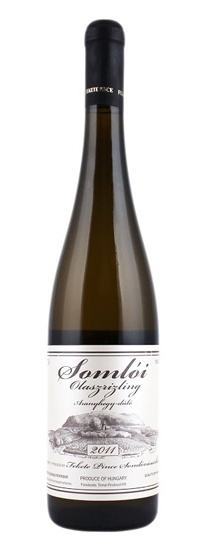
 At a recent tasting in New York City, a wide array of Hungarian wines were on display. Most wine lovers who have any familiarity with Hungarian wines probably think of dessert wines first, and for good reason; they make some of the best examples in the world. However there are plenty of dry wines, both white and red, being produced in Hungary that are more than worth diving into. The assortment includes both selections made from indigenous varieties and international grapes. I sampled 35 or so wines that day, which really ran the gamut of diversity. As interesting and good as some of those produced from international varieties were, my favorites were from grapes that are either native to Hungary or thrive there in particular. Five wines stood out to me above the rest: Head over to The Daily Meal to read The Rest.
At a recent tasting in New York City, a wide array of Hungarian wines were on display. Most wine lovers who have any familiarity with Hungarian wines probably think of dessert wines first, and for good reason; they make some of the best examples in the world. However there are plenty of dry wines, both white and red, being produced in Hungary that are more than worth diving into. The assortment includes both selections made from indigenous varieties and international grapes. I sampled 35 or so wines that day, which really ran the gamut of diversity. As interesting and good as some of those produced from international varieties were, my favorites were from grapes that are either native to Hungary or thrive there in particular. Five wines stood out to me above the rest: Head over to The Daily Meal to read The Rest.
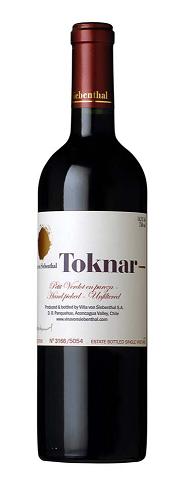
 Petit verdot is one of those grapes the average wine drinker doesn’t think of too often. Usually it shows up in Bordeaux-style blends as a complementary player to cabernet sauvignon, merlot, and the like. When I talk to winemakers, they often mention that in those blends a little petit verdot goes a long way. So in the rare instance when one is bottled as a single varietal offering it could well be worth paying attention. That was the case with one from Chile that I recently drank.
Head over to The Daily Meal to read the rest.
Petit verdot is one of those grapes the average wine drinker doesn’t think of too often. Usually it shows up in Bordeaux-style blends as a complementary player to cabernet sauvignon, merlot, and the like. When I talk to winemakers, they often mention that in those blends a little petit verdot goes a long way. So in the rare instance when one is bottled as a single varietal offering it could well be worth paying attention. That was the case with one from Chile that I recently drank.
Head over to The Daily Meal to read the rest.
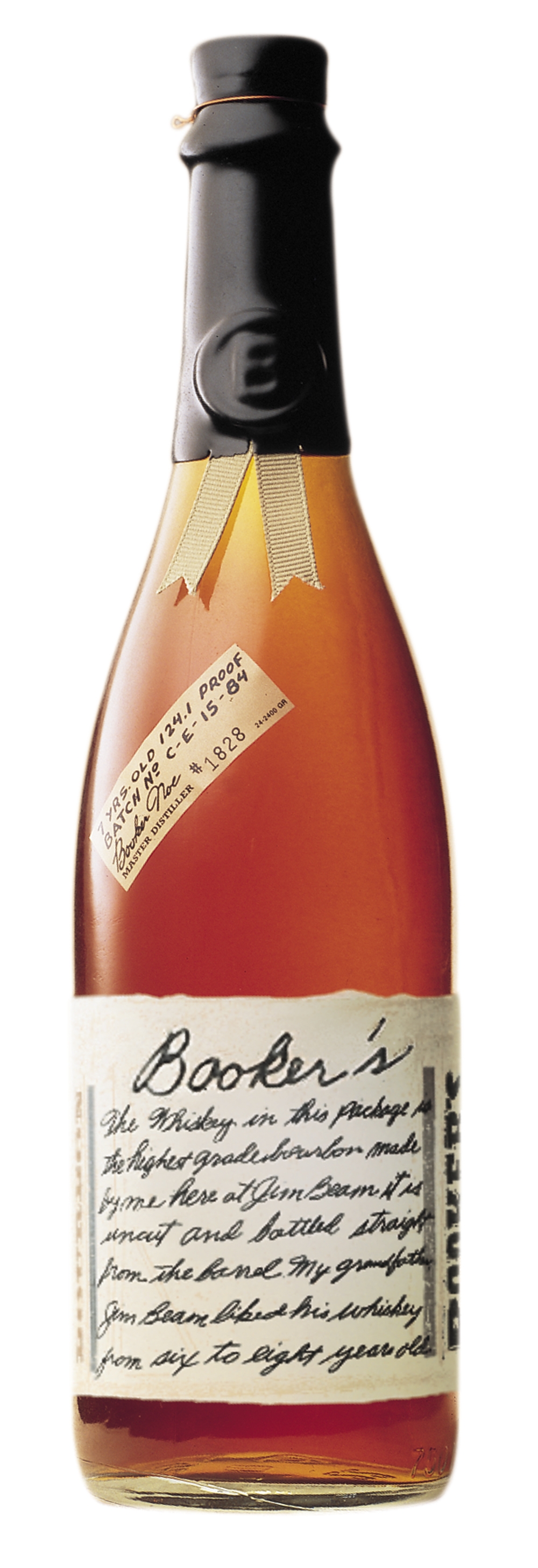
 Whiskey comes in all shapes and sizes. Some people are avowed bourbon drinkers, while others swear by Scotch. Personally I love them both, it just depends what I’m in the mood for, in a particular moment in time. Life is all about context after all. Comparing the similarities and distinctions between bourbon and Scotch is as inspiring to whiskey lovers as contrasting a Napa cabernet with a fine Bordeaux is to a wine lover. One of the things that make bourbon so appealing is the wide array of small batch offerings appearing on our shelves. There are distillers popping up all over the country making interesting examples of bourbon. Many of the large distillers also have a small batch program whose focus is on specific lots produced in limited quantities. I just tasted one that’s part of the Jim Beam family of whiskies and it left a strong impression on me. Head over to The Daily Meal to read the rest.
Whiskey comes in all shapes and sizes. Some people are avowed bourbon drinkers, while others swear by Scotch. Personally I love them both, it just depends what I’m in the mood for, in a particular moment in time. Life is all about context after all. Comparing the similarities and distinctions between bourbon and Scotch is as inspiring to whiskey lovers as contrasting a Napa cabernet with a fine Bordeaux is to a wine lover. One of the things that make bourbon so appealing is the wide array of small batch offerings appearing on our shelves. There are distillers popping up all over the country making interesting examples of bourbon. Many of the large distillers also have a small batch program whose focus is on specific lots produced in limited quantities. I just tasted one that’s part of the Jim Beam family of whiskies and it left a strong impression on me. Head over to The Daily Meal to read the rest.
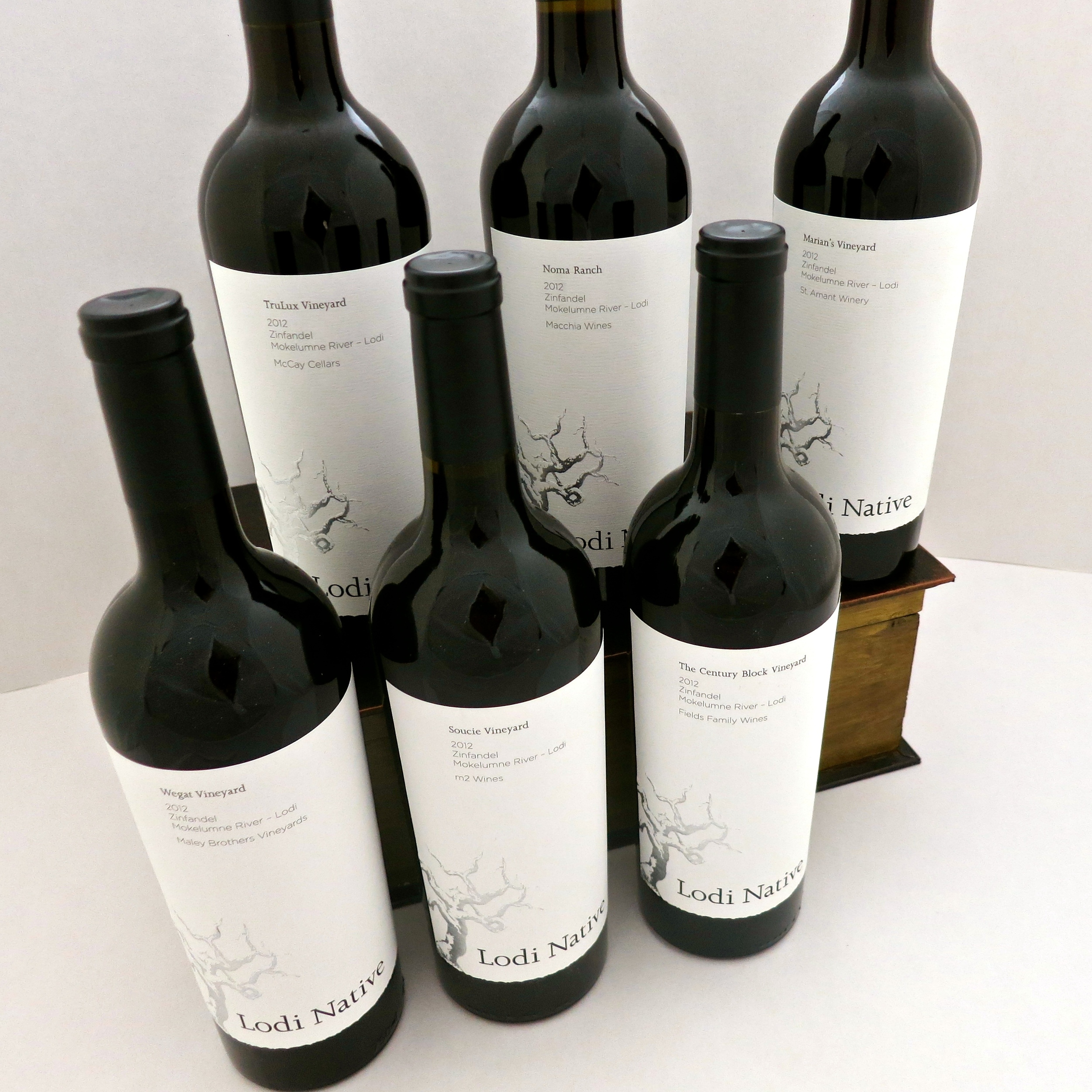
 If you love wine, you’ll notice that more and more often specific sub-regions are being listed on the label. And well beyond that, single vineyards are often highlighted. In some cases these vineyards become famous and take on a life of their own with numerous producers sourcing fruit from them. Single vineyard designated wines are quite common in the world of zinfandel, and a lot of zinfandel comes from the Lodi region of California.
Six winemakers from that area have set out to show how distinct wines from Lodi can be. Furthermore their goal is to highlight the specific vineyards. They have done this by choosing heritage plantings that often date back to the late 1800s. Each winemaker used exactly the same methodology to produce the wines. Head over to The Daily Meal to read the rest.
If you love wine, you’ll notice that more and more often specific sub-regions are being listed on the label. And well beyond that, single vineyards are often highlighted. In some cases these vineyards become famous and take on a life of their own with numerous producers sourcing fruit from them. Single vineyard designated wines are quite common in the world of zinfandel, and a lot of zinfandel comes from the Lodi region of California.
Six winemakers from that area have set out to show how distinct wines from Lodi can be. Furthermore their goal is to highlight the specific vineyards. They have done this by choosing heritage plantings that often date back to the late 1800s. Each winemaker used exactly the same methodology to produce the wines. Head over to The Daily Meal to read the rest.
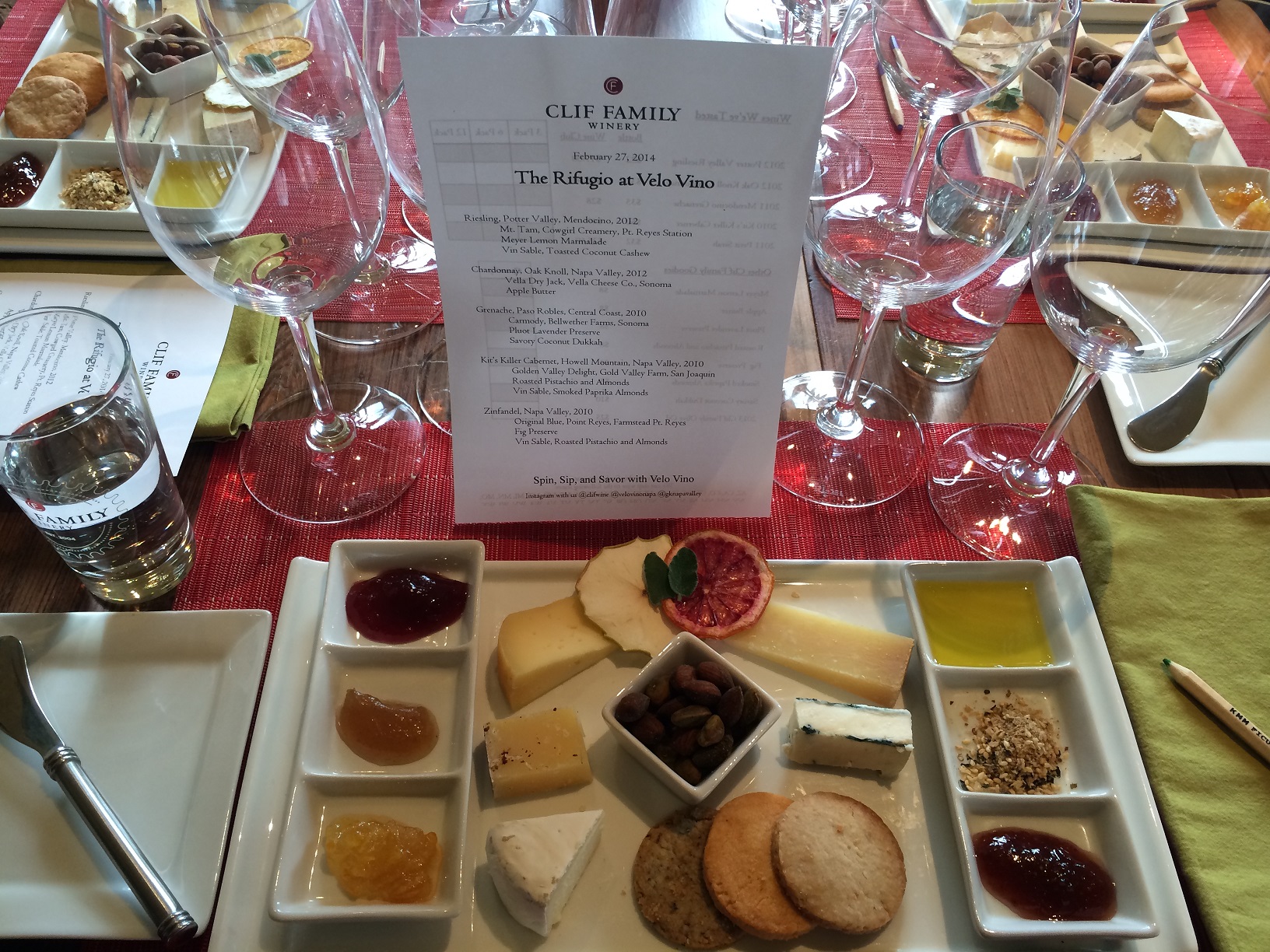
 Most every moment I spend in wine regions I’m on the hunt. Of course I’m looking for excellent wine, but when I’m on the ground somewhere I’m searching for brilliant tasting experiences too. They come in every shape and size, offering everything from just wine, to light pairings, all the way to full on meals accompanying wines. I just spent 10 days split between Napa Valley and Sonoma County; and on this trip alone had a huge variety of experiences. Many of them were quite good and well worth mentioning. One, however, stood above the pack. To say my tasting at Clif Family Winery was a homerun would be to sell the experience short. The tasting at Clif Family Winery is a Hall-of-Fame-caliber tasting, easily in the top five tasting experiences available in Napa Valley. Head over to The Daily Meal to read the rest.
Most every moment I spend in wine regions I’m on the hunt. Of course I’m looking for excellent wine, but when I’m on the ground somewhere I’m searching for brilliant tasting experiences too. They come in every shape and size, offering everything from just wine, to light pairings, all the way to full on meals accompanying wines. I just spent 10 days split between Napa Valley and Sonoma County; and on this trip alone had a huge variety of experiences. Many of them were quite good and well worth mentioning. One, however, stood above the pack. To say my tasting at Clif Family Winery was a homerun would be to sell the experience short. The tasting at Clif Family Winery is a Hall-of-Fame-caliber tasting, easily in the top five tasting experiences available in Napa Valley. Head over to The Daily Meal to read the rest.

 Hall Napa Valley currently produces about 120,000 cases of wine per year. They have been making wine in Napa since they opened their winery in 2005. Just this spring, the Halls launched a new facility in St. Helena. This new winery and tasting room was built on a site that has a 150-year history in Napa Valley wine making. The Halls still maintain their original, intimate location in Rutherford and continue to make some wines there, but the new facility allows them to host a variety of events as well as have more people visit and taste wine on a daily basis. On a recent trip to Napa Valley I stopped at Hall St. Helena, toured their new facility and grounds, and of course tasted through their current portfolio. Here are some wines from their Napa Valley collection that I enjoyed. These selections are widely available all over the country. Head over to Bullz-Eye.com to read the rest.
Hall Napa Valley currently produces about 120,000 cases of wine per year. They have been making wine in Napa since they opened their winery in 2005. Just this spring, the Halls launched a new facility in St. Helena. This new winery and tasting room was built on a site that has a 150-year history in Napa Valley wine making. The Halls still maintain their original, intimate location in Rutherford and continue to make some wines there, but the new facility allows them to host a variety of events as well as have more people visit and taste wine on a daily basis. On a recent trip to Napa Valley I stopped at Hall St. Helena, toured their new facility and grounds, and of course tasted through their current portfolio. Here are some wines from their Napa Valley collection that I enjoyed. These selections are widely available all over the country. Head over to Bullz-Eye.com to read the rest.
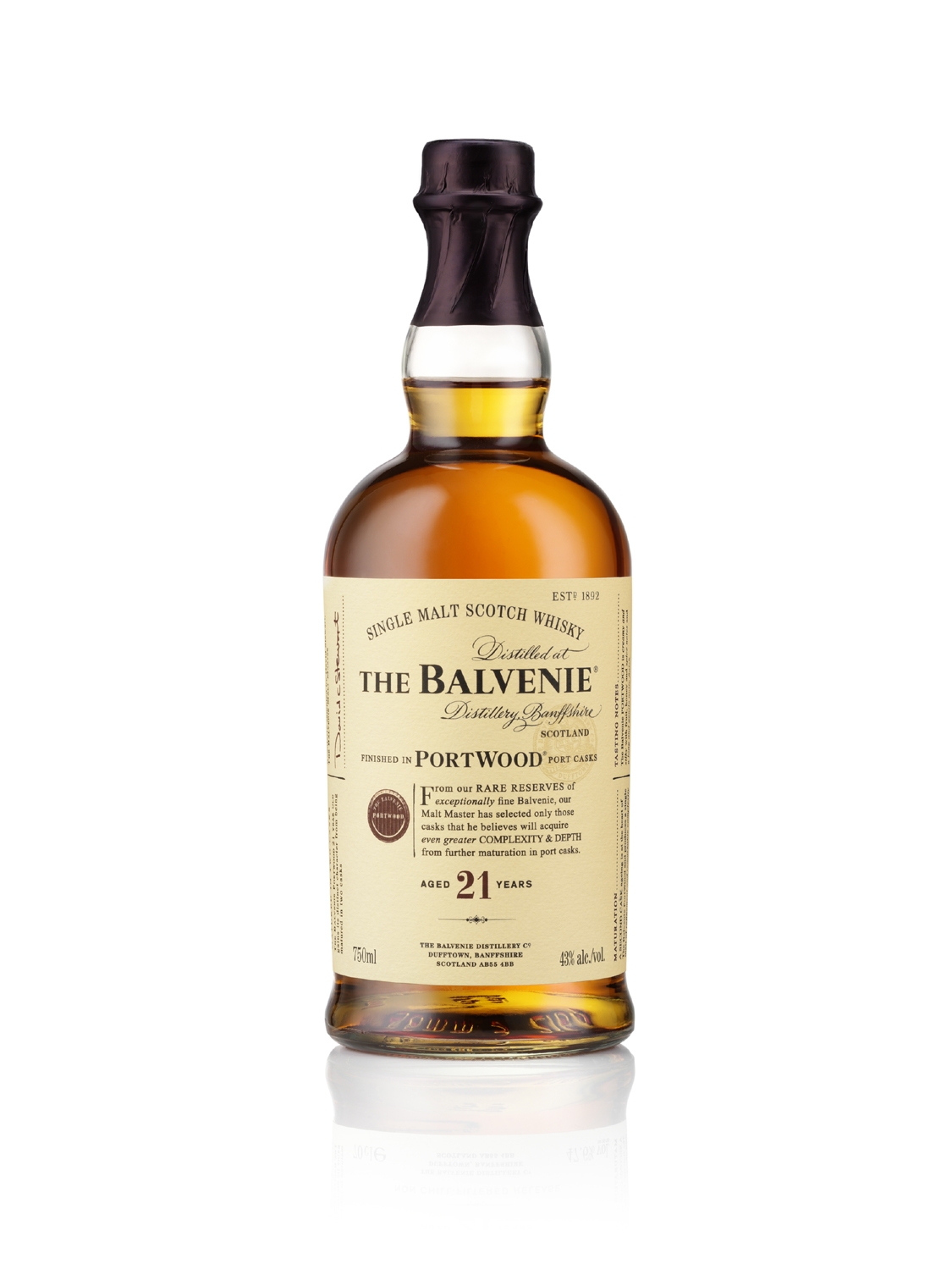
 The Balvenie, a range of Single Malt Scotches from the Speyside region of Scotland, features a diverse portfolio. If you’re a Scotch lover they likely have something in their range to suit your palate. The commonality to me is the attention to detail that helps them to achieve the quality and consistency their name evokes. Among the things that set The Balvenie apart are the strict controls they retain over several aspects of the production process. Growing their own barley and employing their own staff of coopers to handle every cask are but two examples. I’ve been a fan of the Balvenie range for quite a while now, and the 12 Year Old DoubleWood is one I go to on a regular basis. Therefore it’s always interesting to taste the rare, more sought-after examples in their range. Amongst those the Balvenie Portwood 21 is a highly desirable Scotch produced in limited quantities. Head over to The Daily Meal to read the rest.
The Balvenie, a range of Single Malt Scotches from the Speyside region of Scotland, features a diverse portfolio. If you’re a Scotch lover they likely have something in their range to suit your palate. The commonality to me is the attention to detail that helps them to achieve the quality and consistency their name evokes. Among the things that set The Balvenie apart are the strict controls they retain over several aspects of the production process. Growing their own barley and employing their own staff of coopers to handle every cask are but two examples. I’ve been a fan of the Balvenie range for quite a while now, and the 12 Year Old DoubleWood is one I go to on a regular basis. Therefore it’s always interesting to taste the rare, more sought-after examples in their range. Amongst those the Balvenie Portwood 21 is a highly desirable Scotch produced in limited quantities. Head over to The Daily Meal to read the rest.
 Laphroaig is one if the most recognizable names in Scotch. Not only that, they bring to mind something even more specific, Peaty Scotch. They are best known for Single Malt’s that feature a trademark smoke and peat in their flavor profiles. Quite recently they have launched a brand new expression: Laphroaig Càirdeas 2013. The name comes from the traditional Gaelic meaning for friendship.
The Laphroaig Càirdeas Port Wood Edition was finished in port barrels to add even more complexity. It is available nationwide but in limited quantities. Càirdeas Port Wood has a suggested retail price of $75.00. This Scotch has a gorgeous Rosé tinted hue that just shimmers beautifully when you pour it. The nose is impressively expressive with hints of dark chocolate, fruit and just a gentle wisp of green herb. Taking the first sip it’s impossible not to be immediately knocked by the depth and complexity of the palate. A cornucopia of light and dark flavors simply envelop your senses and get your brain working on figuring out all the different pleasing characteristics it’s enjoying. Bits of brown sugar emerge on the finish and provide a nice sweetness along with loads of spices that bring fruitcake to mind. These lead into a hint of char, dark chocolate and pepper spice. The length here is tremendous with all the elements reverberating persistently for a long and impressive amount of time.
Laphroaig is one if the most recognizable names in Scotch. Not only that, they bring to mind something even more specific, Peaty Scotch. They are best known for Single Malt’s that feature a trademark smoke and peat in their flavor profiles. Quite recently they have launched a brand new expression: Laphroaig Càirdeas 2013. The name comes from the traditional Gaelic meaning for friendship.
The Laphroaig Càirdeas Port Wood Edition was finished in port barrels to add even more complexity. It is available nationwide but in limited quantities. Càirdeas Port Wood has a suggested retail price of $75.00. This Scotch has a gorgeous Rosé tinted hue that just shimmers beautifully when you pour it. The nose is impressively expressive with hints of dark chocolate, fruit and just a gentle wisp of green herb. Taking the first sip it’s impossible not to be immediately knocked by the depth and complexity of the palate. A cornucopia of light and dark flavors simply envelop your senses and get your brain working on figuring out all the different pleasing characteristics it’s enjoying. Bits of brown sugar emerge on the finish and provide a nice sweetness along with loads of spices that bring fruitcake to mind. These lead into a hint of char, dark chocolate and pepper spice. The length here is tremendous with all the elements reverberating persistently for a long and impressive amount of time.
There are more and more expressions of Scotch available to us every day. As such this is a great and prosperous time to be a Scotch drinker. Part of what keeps things really interesting are rare and limited releases such as The Laphroaig Càirdeas Port Wood edition. It’s not going to be on shelves forever, so grab a bottle if you’re lucky enough to find one.
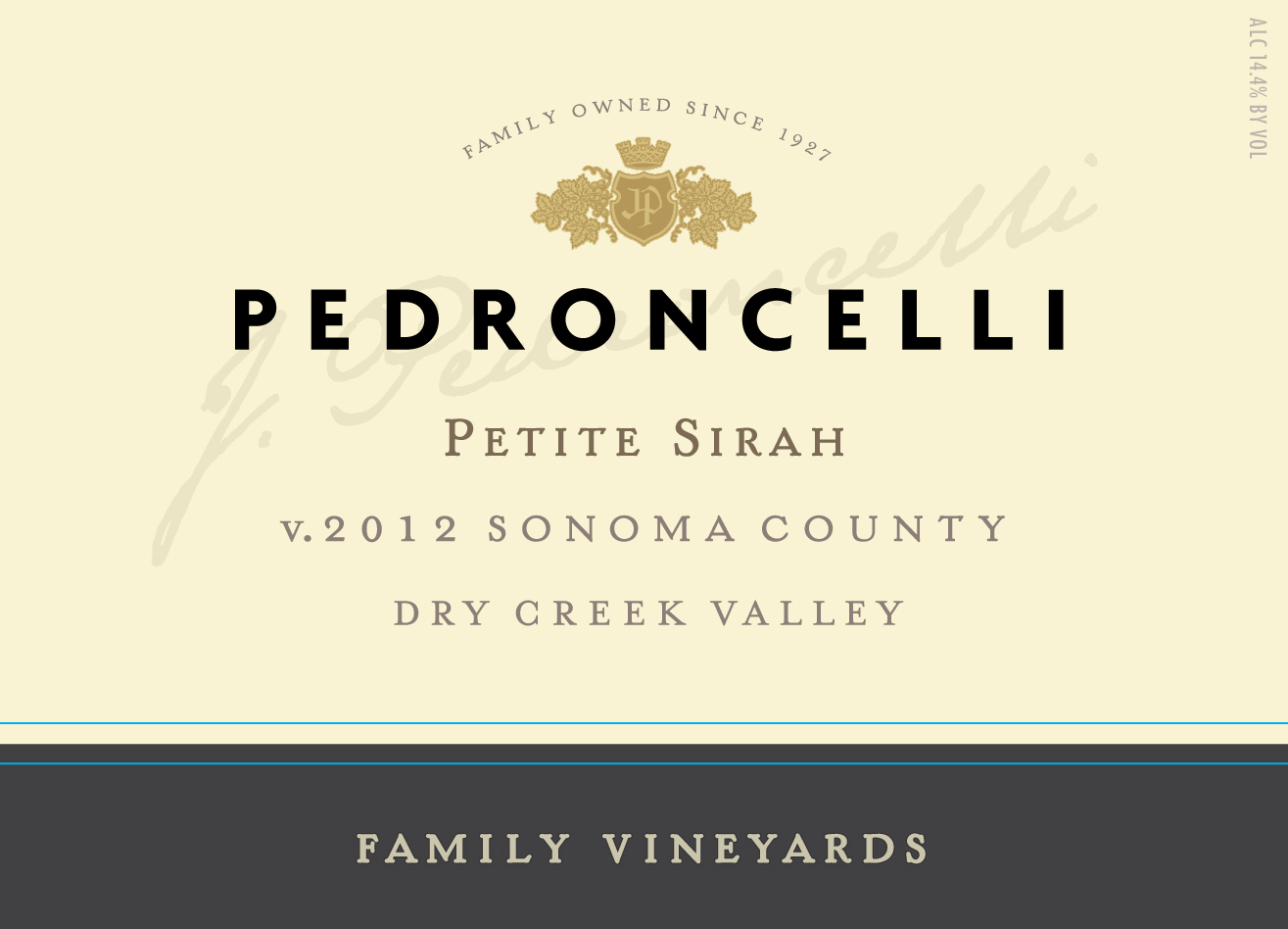
 Summer is here and grilling season is in full swing. Whether you’re pulling burgers, ribs, chicken, or portabellas off of your grill, you’ll need a wine that will pair well with all of those things. Petite sirah, generally one of darkest, inkiest, and most intense wines out there, is too often relegated to winter and paired with stews and pot roasts. Don’t get me wrong — it works fabulously with those dishes, but it works equally well, if not better, with grilled or smoked foods. Over the last several weeks I tasted through 77 current examples of petite sirah of all shapes, sizes and styles. The 36 below are the examples I heartily recommend, including a couple of older wines I tasted.
One of the things I love about petite sirah is the quality you can get for such a reasonable price relative to many other more well-known grapes. It’s a particularly good value if you like aging wine. Not every example will age well of course, some are built for youthful drinking, but many are and they’re often bargains. I sampled two examples from the 2004 vintage. Both from long-term petite producers whose current releases I also recommend. Head over to The Daily Meal to read the rest.
Summer is here and grilling season is in full swing. Whether you’re pulling burgers, ribs, chicken, or portabellas off of your grill, you’ll need a wine that will pair well with all of those things. Petite sirah, generally one of darkest, inkiest, and most intense wines out there, is too often relegated to winter and paired with stews and pot roasts. Don’t get me wrong — it works fabulously with those dishes, but it works equally well, if not better, with grilled or smoked foods. Over the last several weeks I tasted through 77 current examples of petite sirah of all shapes, sizes and styles. The 36 below are the examples I heartily recommend, including a couple of older wines I tasted.
One of the things I love about petite sirah is the quality you can get for such a reasonable price relative to many other more well-known grapes. It’s a particularly good value if you like aging wine. Not every example will age well of course, some are built for youthful drinking, but many are and they’re often bargains. I sampled two examples from the 2004 vintage. Both from long-term petite producers whose current releases I also recommend. Head over to The Daily Meal to read the rest.
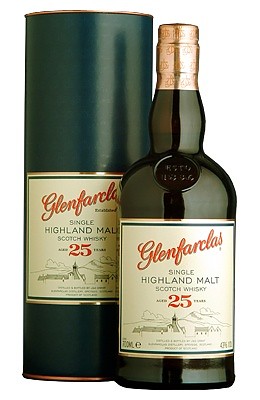
 Glenfarclas 25 Year Old Single Malt Highland Scotch, SRP $150.
Glenfarclas has been owned by a single family since 1865. This Speyside distillery is in fact one of a small handful in Scotland that remains family owned and run. They’re a fairly small company with just more than 30 people employed in their entire operation. Several of these employees have been with them for more than 25 years. They run a 24 hour operation which among other things manages 52,000 casks at varying states of maturity; these are all moved by hand. I recently tasted the Glenfarclas 25 Year Old Single Malt Highland Scotch. Head over to The Daily Meal to read the rest.
Glenfarclas 25 Year Old Single Malt Highland Scotch, SRP $150.
Glenfarclas has been owned by a single family since 1865. This Speyside distillery is in fact one of a small handful in Scotland that remains family owned and run. They’re a fairly small company with just more than 30 people employed in their entire operation. Several of these employees have been with them for more than 25 years. They run a 24 hour operation which among other things manages 52,000 casks at varying states of maturity; these are all moved by hand. I recently tasted the Glenfarclas 25 Year Old Single Malt Highland Scotch. Head over to The Daily Meal to read the rest.
My Latest Whisky Story for:

I tend to lump my Bourbons into two distinct categories: those I like to drink neat or on the rocks, and those I use in cocktails. Often the ones at the lower end of the price spectrum aren’t as palatable neat, whereas I’m often loathe to mix higher-end bourbons with anything. So when I sat down to taste Basil Hayden’s, I tried it both ways and really wondered where I’d land with it.
The recipe used to distill Basil Hayden’s dates back more than 200 years. It’s made from both rye and corn to create a Bourbon with a wider flavor profile, and to this day they still use... Read the rest over at The Daily Meal
My Latest Story for:

Concha y Toro is the largest winery in Chile. The depth and variety of their portfolio spans many styles, price-points, and varietals. They employ several winemakers; each focuses on a different tier of wines. I recently had lunch with Marcelo Papa at Haven’t Kitchen. He’s the Concha y Toro winemaker responsible, among others, for the Marqués de Casa Concha line. These offerings are single vineyard, site-specific wines. Over lunch we tasted a number of the selections in this range, each paired with a food that showcased a different global influence. The goal was to highlight the ability of their wines to pair with cuisine of various styles from all over the world. If wine pairing is performance, this was a tour de force showing. The foods prepared by Concha y Toro executive chef Ruth Van Waerebeek worked fabulously with Marcelo’s wines. Prior to sitting down to lunch we tasted a few newly launched wines outside the Marques line. Here are the six wines from this afternoon that really struck a chord with me. Read the rest over at The Daily Meal
 My Latest Story for Bullz-eye.com:
My Latest Story for Bullz-eye.com:
The Kautz family has been farming grapes in California for more than 65 years. With more than 5,000 acres under vine, they’re one of the largest growers in the state. In addition to selling fruit, for more than 25 of those years they have also been making their own wine. Ironstone Vineyards is located in the Sierra Foothills. They farm their property sustainably as shepherds of the land they inhabit. Their portfolio features a wide range of wines, many available nationally, as well as a few limited releases found in their tasting room. Here’s a look at four of my favorites among their current offerings.
Ironstone Vineyards 2012 Ironstone Reserve Chardonnay – The fruit for this wine came from Sierra Foothills vineyards that have been in the family for four generations. This offering is 100 percent Chardonnay. The fruit was hand-selected and gently pressed. Barrel aging occurred entirely in French oak; bottle aging followed prior to release. About 1,000 cases of this wine were produced, and it has a suggested retail price of of $19.99. Bright apple, white fig and gentle crème brulee aromas are all part of the nose of this Chardonnay. The palate is studded with Asian pear and... read the rest over at Bullz-eye.com

 Concha y Toro is the largest winery in Chile. The depth and variety of their portfolio spans many styles, price-points, and varietals. They employ several winemakers; each focuses on a different tier of wines. I recently had lunch with Marcelo Papa at Haven’t Kitchen. He’s the Concha y Toro winemaker responsible, among others, for the Marqués de Casa Concha line. These offerings are single vineyard, site-specific wines. Over lunch we tasted a number of the selections in this range, each paired with a food that showcased a different global influence. The goal was to highlight the ability of their wines to pair with cuisine of various styles from all over the world. If wine pairing is performance, this was a tour de force showing. The foods prepared by Concha y Toro executive chef Ruth Van Waerebeek worked fabulously with Marcelo’s wines. Prior to sitting down to lunch we tasted a few newly launched wines outside the Marques line. Here are the six wines from this afternoon that really struck a chord with me. Head over to The Daily Meal to read the rest.
Concha y Toro is the largest winery in Chile. The depth and variety of their portfolio spans many styles, price-points, and varietals. They employ several winemakers; each focuses on a different tier of wines. I recently had lunch with Marcelo Papa at Haven’t Kitchen. He’s the Concha y Toro winemaker responsible, among others, for the Marqués de Casa Concha line. These offerings are single vineyard, site-specific wines. Over lunch we tasted a number of the selections in this range, each paired with a food that showcased a different global influence. The goal was to highlight the ability of their wines to pair with cuisine of various styles from all over the world. If wine pairing is performance, this was a tour de force showing. The foods prepared by Concha y Toro executive chef Ruth Van Waerebeek worked fabulously with Marcelo’s wines. Prior to sitting down to lunch we tasted a few newly launched wines outside the Marques line. Here are the six wines from this afternoon that really struck a chord with me. Head over to The Daily Meal to read the rest.
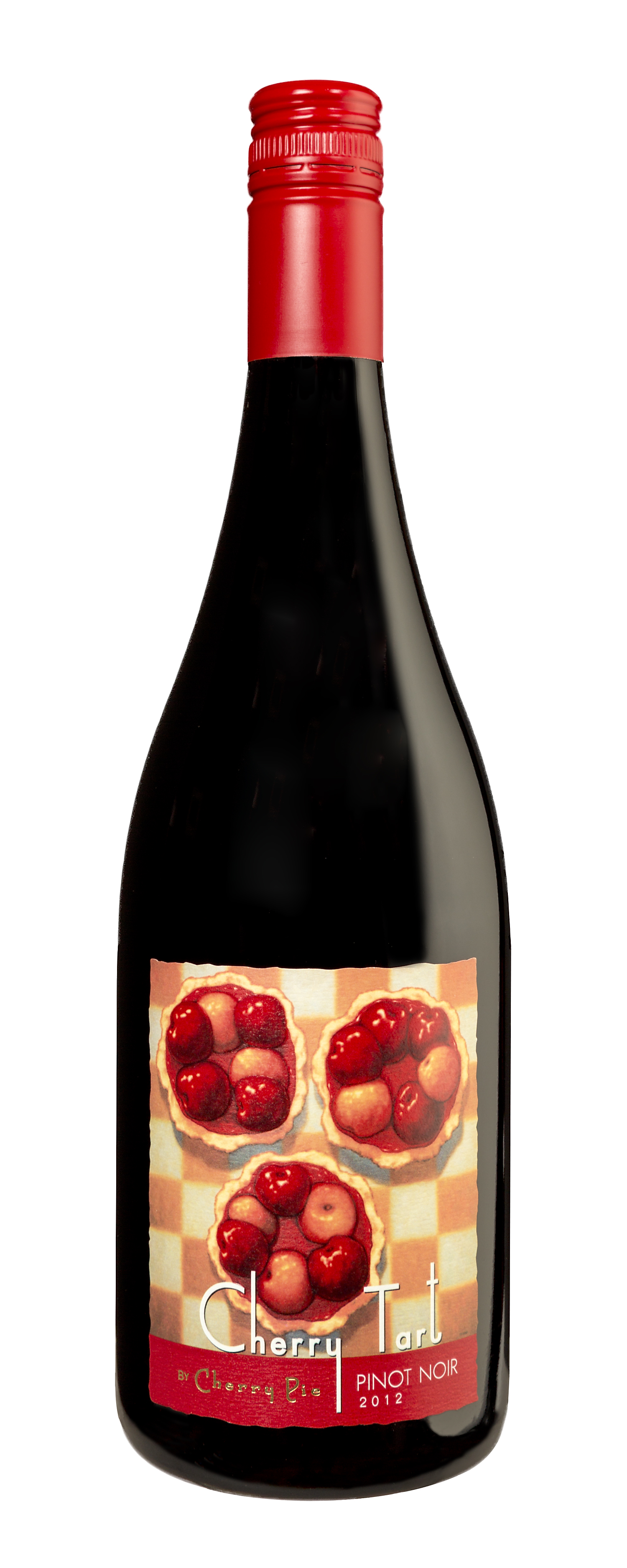 There may not be a harder grape to find bargains with than Pinot Noir. This notoriously fickle varietal doesn’t grow well everywhere and some people plant it in the wrong spot. Others mismanage the winemaking aspect. But when Pinot is right it can be ethereal. So I’m always interested in tasting as much Pinot as possible. I am particularly curious about examples that are appropriate for everyday consumption. So when an example from cult winemaker Jayson Woodbridge landed on my desk I was really curious to check it out. The fun packaging and name added to the intrigue for me.
Cherry Tart by Cherry Pie 2012 Pinot Noir was produced using fruit sourced in three different California wine growing regions. Sonoma Coast (49%), Monterey County (43%) and Santa Barbara County (8%) are the three regions represented. Fruit from only one vineyard in each area was used, making this what the winery calls a “multi-single vineyard blend.” Each lot of wine was fermented separately. Barrel aging took place in entirely French oak; 20% of the barrels used were new. This 100% Pinot Noir wine has a suggested retail price of $25. Red fruits rule the day on the nose of this Pinot. Wild Strawberry, cherry and bits of cranberry are all present along with wisps of spice. The palate is eager and willing with droves of super-appealing red fruit flavors such as cherry, plum and subtle hint of red raspberry. Vanilla bean characteristics are present as well. Bits of black tea, cranberry, cardamom, and toast are all present on the finish which has good length.
There may not be a harder grape to find bargains with than Pinot Noir. This notoriously fickle varietal doesn’t grow well everywhere and some people plant it in the wrong spot. Others mismanage the winemaking aspect. But when Pinot is right it can be ethereal. So I’m always interested in tasting as much Pinot as possible. I am particularly curious about examples that are appropriate for everyday consumption. So when an example from cult winemaker Jayson Woodbridge landed on my desk I was really curious to check it out. The fun packaging and name added to the intrigue for me.
Cherry Tart by Cherry Pie 2012 Pinot Noir was produced using fruit sourced in three different California wine growing regions. Sonoma Coast (49%), Monterey County (43%) and Santa Barbara County (8%) are the three regions represented. Fruit from only one vineyard in each area was used, making this what the winery calls a “multi-single vineyard blend.” Each lot of wine was fermented separately. Barrel aging took place in entirely French oak; 20% of the barrels used were new. This 100% Pinot Noir wine has a suggested retail price of $25. Red fruits rule the day on the nose of this Pinot. Wild Strawberry, cherry and bits of cranberry are all present along with wisps of spice. The palate is eager and willing with droves of super-appealing red fruit flavors such as cherry, plum and subtle hint of red raspberry. Vanilla bean characteristics are present as well. Bits of black tea, cranberry, cardamom, and toast are all present on the finish which has good length.
This is a fruity, eager to please example of Pinot Noir loaded with fresh flavors and genuine varietal character. It’s full bodied for a Pinot but never strays out of proportion. It’s perfectly suited for BBQ’s and picnics all summer long as it will pair well with a particularly wide array of foods. I paired with one of my favorite grain salads and the match was heavenly. The recipe follows, so pick up a bottle of Cherry Tart and try the recipe below. I think you’ll find that it’s a killer pairing. At $25, less if you shop around, this is a solid value in well made, Pinot Noir. Drink it in its engaging youth.
Roasted Mushroom & Farro Salad*
Ingredients: 1 ½ cups Dry Farro 1 lb Mushrooms (1/2 lb each Portobello and button works well) 3 Tablespoons Lemon Juice 1/3 Cup Pecorino Romano (grated with the coarse side of a box grater) 1 Cup of Shelled Walnut Pieces or Pecans 1 Tbsp Parsley Flakes Black Pepper Salt 9 Tbsp Olive Oil + ½ tsp Red Pepper Flakes
Directions: Combine the lemon juice, 9 tablespoons of olive oil, parsley and red pepper flakes in a bowl or mixing cup; whisk vigorously and set aside. Cook the Farro until done (approximately 20 minutes) in 3 cups of salted water. I tend to use vegetable bullion instead of salt to add an extra layer of flavor. When the Farro is cooked, drain and allow it to cool. Mushrooms should be cleaned and chopped into roughly 1 inch pieces. Then toss them with a bit of salt, olive oil and black pepper. Put them on a cookie sheet and roast them in the oven (350 degrees) for about 25 minutes or until they are getting golden and slightly crispy. Allow them to cool. Place the walnut pieces on a cookie sheet in the oven and lightly toast them. Allow them to cool. Shred the Pecorino Romano on the largest side of a box grater. Doing it this way as opposed to grating on the small side adds to the consistency of the overall dish. When everything has cooled mix the mushrooms, farro, cheese, and nuts together in a bowl. Pour the dressing over the rest of the ingredients and toss everything together until well coated. Taste and adjust salt, red pepper flakes, and pepper as desired. Serve cool or at room temperature. It also holds well in the refrigerator for a week.
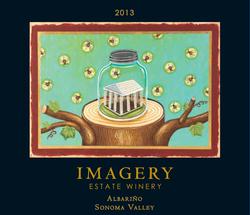 Imagery Estate Winery is located in the town of Glen Ellen in Sonoma County. This family owned producer is best known for a couple of things. One is their focus on producing wines from lesser known grapes. Sometimes from varietals that don’t get much attention from US Winemakers. Albariño which is the single most popular white grape in Spain for instance does not have much representation in US acreage. Another thing they're known for is the gorgeous labels that adorn their bottles. Each release of a wine features art commissioned by Imagery from contemporary artists. They’re a small winery and their releases are largely available at their tasting room of through their website. Here’s a look at two that are certainly worth the extra effort to obtain.
Imagery Estate Winery 2013 Viognier – The fruit for this wine was sourced in Sonoma County’s Russian River Valley. This offering is 100% varietal. It was whole berry pressed and only the free run juice was utilized. Fermentation took place in temperature controlled stainless steel tanks. 802 cases of this wine were produced and it sells for $29. White peach and toasted almond aromas are prominent on the gorgeous nose of this Viognier. The palate is loaded with appealing stone fruits such as apricot and peach; bits of tropical fruits duck in and out as well. Lychee and bits of honey emerge on the finish which has length, depth and precision to spare. Zippy acidity makes this a wonderful food wine, perfect with a host of lighter fare.
Imagery Estate Winery is located in the town of Glen Ellen in Sonoma County. This family owned producer is best known for a couple of things. One is their focus on producing wines from lesser known grapes. Sometimes from varietals that don’t get much attention from US Winemakers. Albariño which is the single most popular white grape in Spain for instance does not have much representation in US acreage. Another thing they're known for is the gorgeous labels that adorn their bottles. Each release of a wine features art commissioned by Imagery from contemporary artists. They’re a small winery and their releases are largely available at their tasting room of through their website. Here’s a look at two that are certainly worth the extra effort to obtain.
Imagery Estate Winery 2013 Viognier – The fruit for this wine was sourced in Sonoma County’s Russian River Valley. This offering is 100% varietal. It was whole berry pressed and only the free run juice was utilized. Fermentation took place in temperature controlled stainless steel tanks. 802 cases of this wine were produced and it sells for $29. White peach and toasted almond aromas are prominent on the gorgeous nose of this Viognier. The palate is loaded with appealing stone fruits such as apricot and peach; bits of tropical fruits duck in and out as well. Lychee and bits of honey emerge on the finish which has length, depth and precision to spare. Zippy acidity makes this a wonderful food wine, perfect with a host of lighter fare.
Imagery Estate Winery 2013 Albariño – The fruit for this wine was sourced in Sonoma Valley. It’s 100% Albariño. After whole berry pressing the juice was fermented in temperature controlled stainless steel tanks. 313 cases of this selection were produced and it sells for $29. Honeydew and Cantaloupe melon aromas dominate the nose along with hints of grapefruit zest. The lush palate is studded with pineapple, Anjou pear, yellow peach, and a bit of white peppercorn. Lemon curd emerges on the finish which is clean, crisp and refreshing. If you want to pour summer into a glass, a bottle of this Albariño will do the trick.
Both of these wines are perfect for summer sipping and pairing with lighter foods. They’re delicious, well-crafted offerings that will quench your thirst as well as offer lots of depth and complexity. Sure you could pop open another bottle of Chardonnay, but it’ll be there when these wines are gone. So grab something different and delight your sense this summer!
Australia is a huge wine producing country whose depth is apparent in both the assortment of varietals they can grow well as well as the styles they’re made in. For years our shores were inundated with mostly lower end Australian wines, often in the form of overripe Shiraz. As a result, the bounty from Australia is significantly broader than a lot of wine lovers realize. All across the Unites States a larger and larger swath of terrific Australian wines are filling our shelves. It’s a great time to try some interesting Australian wines; here are six recent releases that I recommend. To read all about them, head over to The Daily Meal.
